Welcome to the Breton Route, a 12-day journey that blends day sailing with cultural discovery along one of France’s most atmospheric coastlines. This isn’t a fixed itinerary: as with all proper sailing, our route is shaped by wind, weather and tide, and each stop is decided day by day with the crew. What follows is a selection of possible highlights that reflect the character of the region and the nature of this trip.
This route runs in both directions. The itinerary below describes the southbound journey, from Plymouth, England to the French coast, but if you book onto the northbound leg (France to England), you’ll enjoy the same harbours, the same landscapes, and the same sailing experience, just in the other direction.
Plymouth, England
Our departure point is the historic port of Plymouth. Known for its long naval heritage and as the departure point of the Mayflower in 1620, the city remains one of the UK’s key maritime centres.
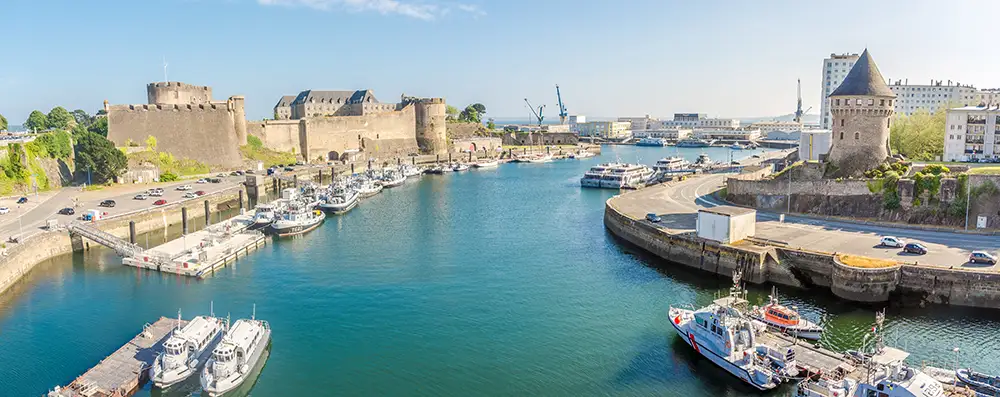
The Channel Crossing
Our first passage takes us across the English Channel for some open water sailing across one of the busiest shipping lanes in the world. It’s great fun as we weave our way between cargo ships bound for ports around the world, their silhouettes passing slowly on the horizon. As the coast of England fades astern, the first outlines of Brittany and France begin to rise, with its low cliffs, distant lighthouses, and the promise of landfall in France. It’s a memorable way to begin the journey, with a real sense of purpose and arrival.
Brest
After crossing the English Channel, we make landfall in Brest, a city shaped by centuries of naval power. Though much of it was rebuilt after World War II, its seafaring past remains visible, especially at the Château de Brest, which houses France’s National Maritime Museum. From the fortress walls, you can look out over the same harbour where French fleets once assembled before heading to war.
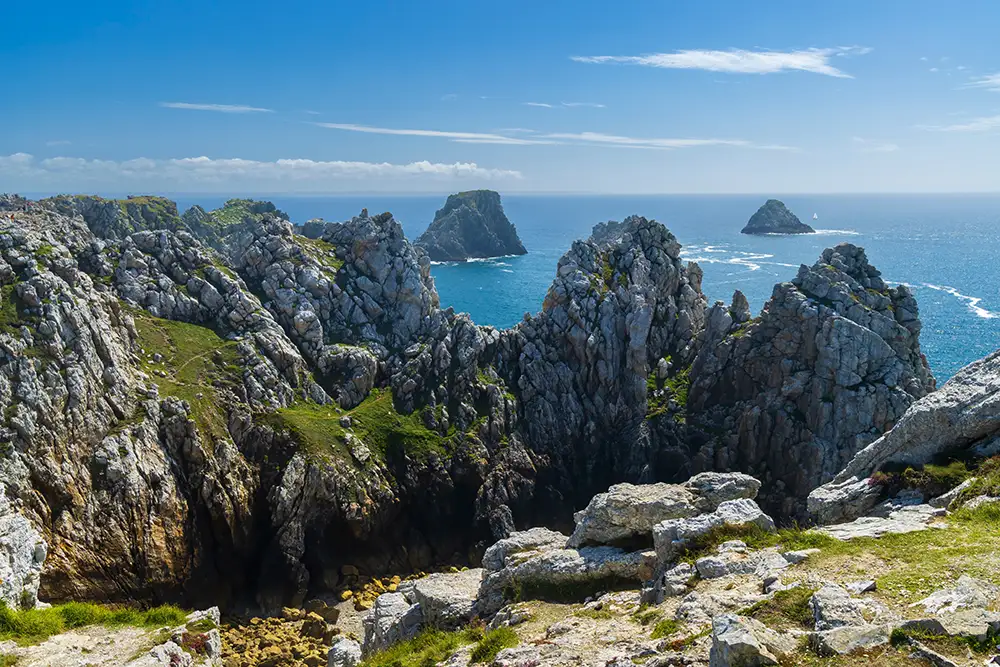
Camaret-sur-Mer
This small, weathered port sits at the edge of the Crozon Peninsula, with a quiet dignity shaped by centuries of wind and sea. The Vauban Tower still watches over the harbour, a 17th-century reminder of France’s coastal defences. Fishing boats rest on the shingle and the Church of Notre-Dame de Rocamadour stands surrounded by the wrecks of wooden trawlers.
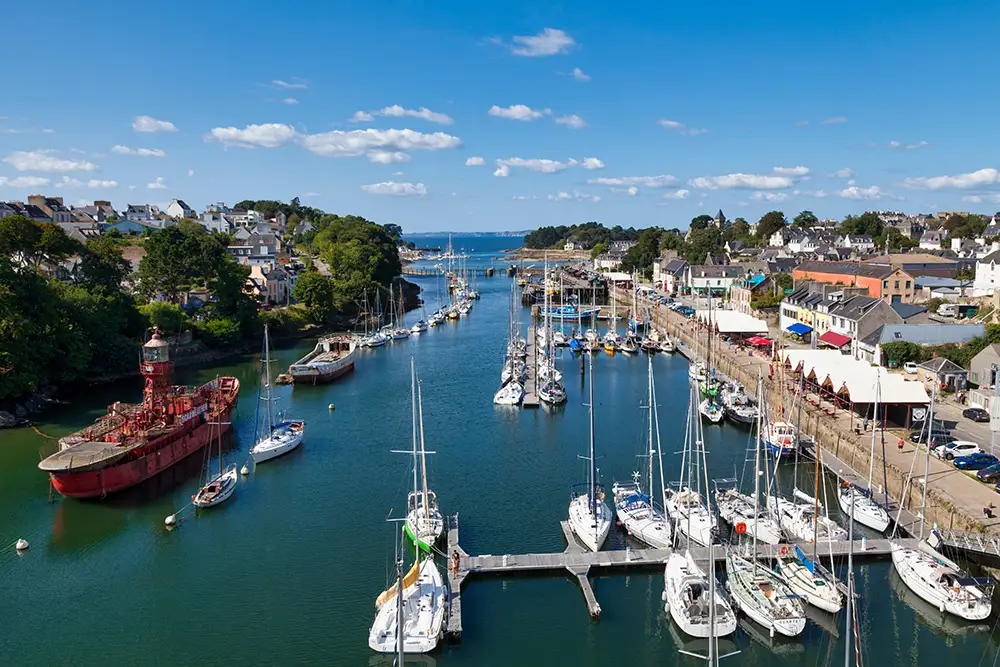
Douarnenez
Once the centre of Brittany’s sardine industry, Douarnenez has a strong sense of itself, with colourful facades, a bohemian atmosphere, and the ever-present smell of salt and fish. The Port-Museum offers a glimpse into the town’s maritime life, and a walk out to Île Tristan at low tide feels like stepping into a folktale.
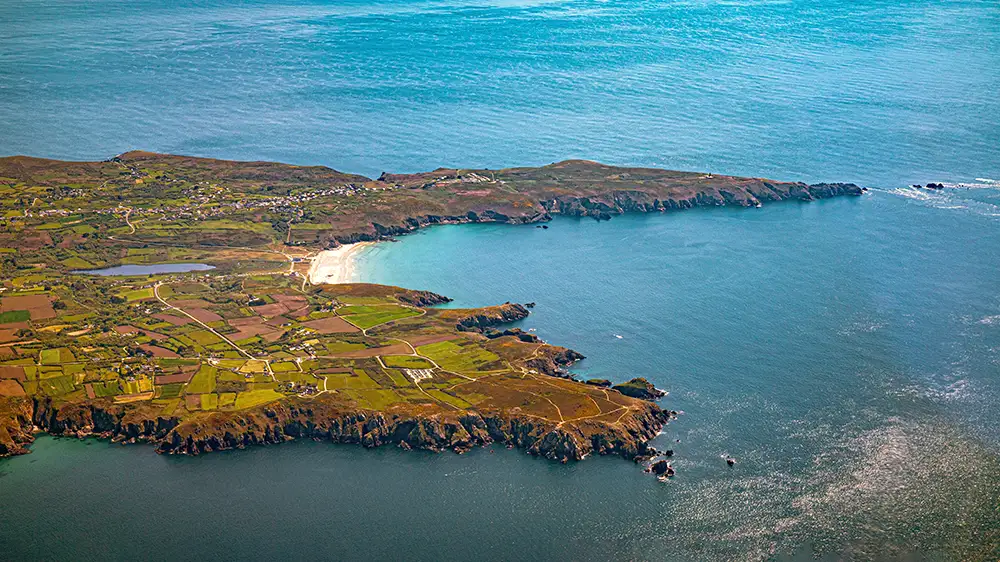
Île de Sein
Remote, flat, and fiercely proud, Île de Sein lies low against the sea at the very edge of Finistère. Its lighthouse has long guided sailors along one of France’s most exposed coastlines. During WWII, the island gained honour when nearly the entire male population joined De Gaulle’s Free French forces. Today, it remains a place of solitude and raw Atlantic beauty.
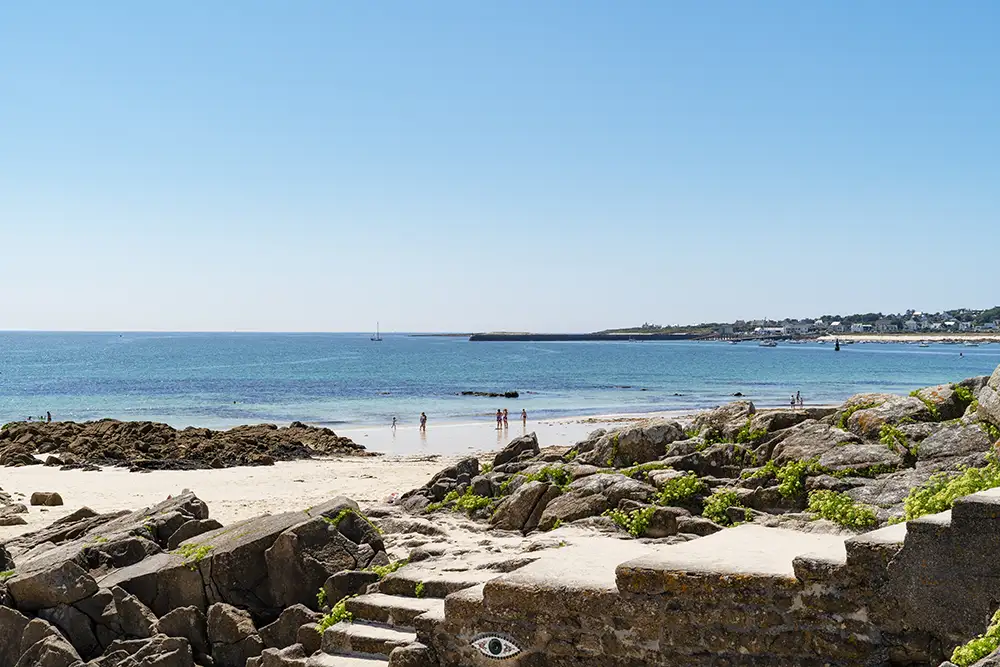
Audierne
Sheltered at the mouth of the Goyen River, Audierne is a quiet Breton harbour where cafés serve langoustines fresh from the boats on the quay. It’s an ideal stop for a lazy afternoon walk to Saint-Ronan Church, or an evening of local cider and oysters. The nearby cliffs of Pointe du Raz offer one of the most dramatic sea views in France.
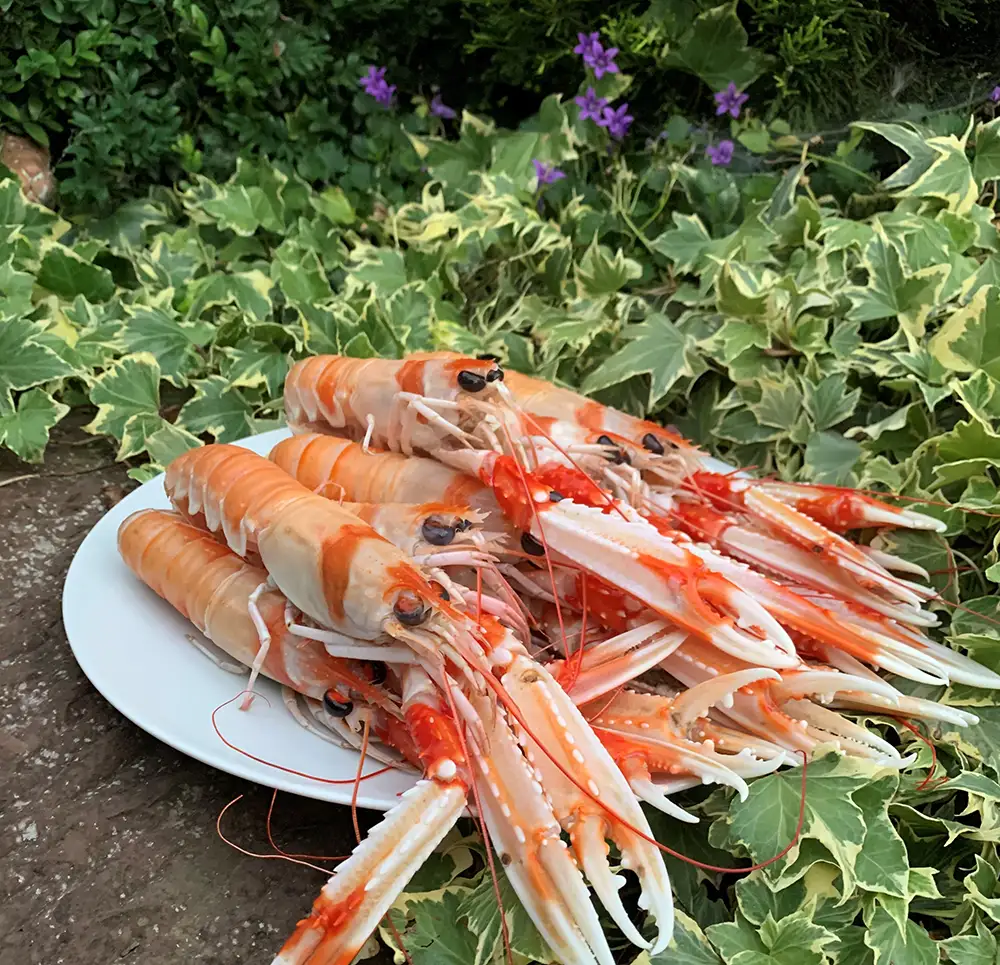
Loctudy
A small fishing port with a reputation for seafood, Loctudy is home to the famed “Demoiselles de Loctudy”, the sweet Breton lobsters once sent directly to Parisian markets. It’s a peaceful town with quiet lanes, coastal chapels, and access to the sandbanks and cafés of Île-Tudy across the estuary.
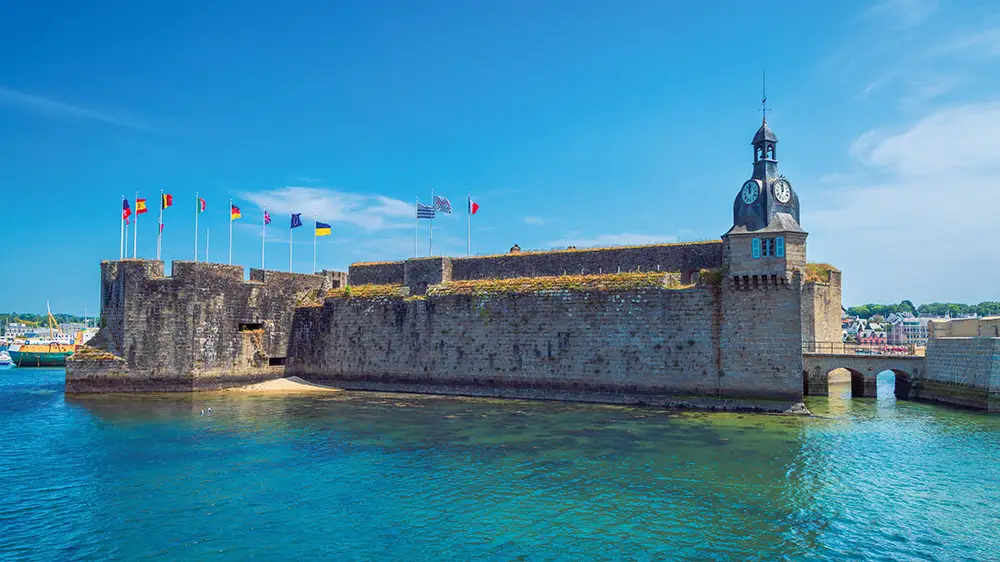
Concarneau
Concarneau is one of the jewels of southern Brittany. The walled town (ville close) sits on its own island in the harbour, lined with cobbled streets, cafés and crêperies. Once a hub of the sardine fleet, its fishing museum offers insight into local maritime life. From the battlements, the view across the anchorage is one of the best on the coast.
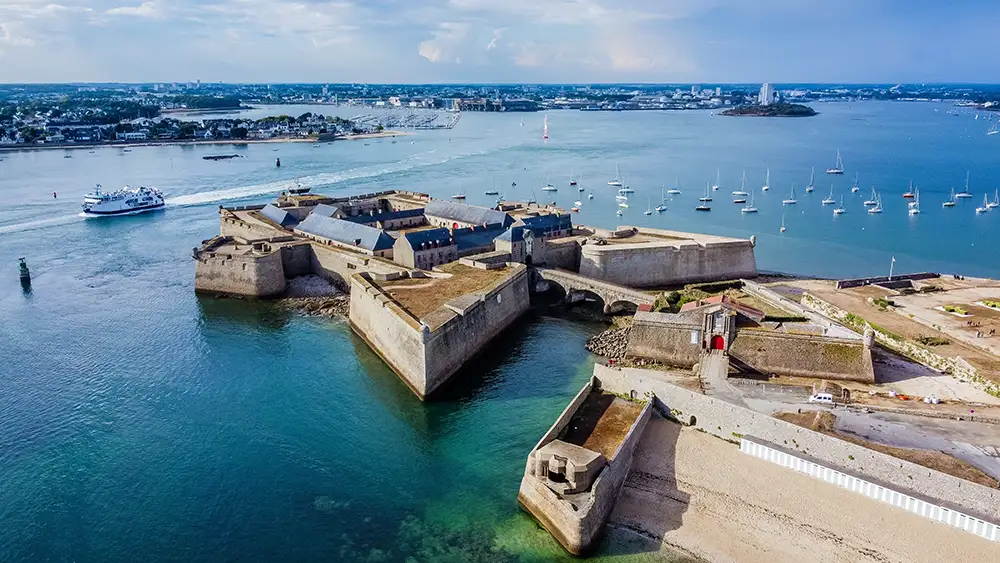
Port-Louis
This fortified harbour was once a centre of French trade with the East. The 17th-century citadel still stands guard over the bay and now houses two excellent museums: one on the French East India Company, and another focused on local maritime heritage. Port-Louis itself is full of character with narrow lanes, quiet squares, and a long view across to Lorient.
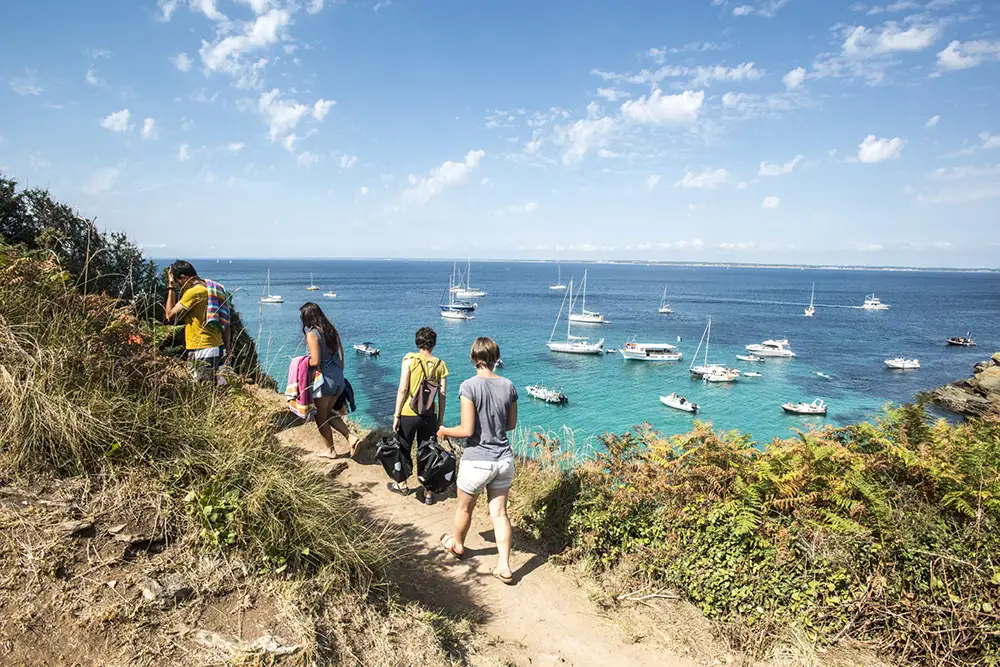
Île de Groix
Groix sits just offshore, with its gently sloping beaches and wooded interior. Known for its crescent-shaped Grands Sables beach and tuna fishing heritage, the island today is a place to anchor, swim, and buy langoustines from the dockside as the sun starts to dip. Bikes are available for rent, and the paths lead through sleepy hamlets and open fields.
Le Verdon-sur-Mer
At the mouth of the Gironde estuary, Le Verdon is a quiet final stop. Wide beaches stretch along the coast, and the vineyards of Médoc are just inland. The nearby Phare de Cordouan, an elegant lighthouse built on a sandbank. It is one of the oldest still in use, and often visited by small boat at slack tide. Wine lovers might recognise the names: Château Margaux and Lafite Rothschild are just a short journey inland.
Each day of the Breton Route brings something new – a harbour tucked behind a headland, a swim off the boat before breakfast, oysters served with lemon in a quiet square. Where we go will depend on the sea, the wind, and the crew. But wherever we land, the welcome is warm, the food unforgettable, and the sailing some of the finest in Europe.
Ready to join?
Most people join solo, and no experience is needed. You’ll be part of the crew from day one, with the option to earn your RYA Competent Crew certificate during the trip. There’s always a good mix of ages and backgrounds on board and it’s the shared journey that brings everyone together. Head to the Dates & Prices tab to see when this trip runs and how to join the boat.